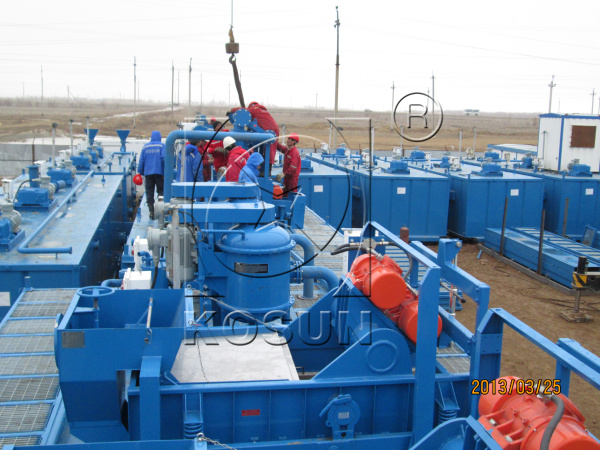Nov 15, 2013
In the oil and gas drilling, there are several systems we can't work well in the drilling, the drilling fluids purification system is a key step of drilling, it is called solids control system in drilling terminology.
When deploying a “solids control system,” there are several key hydraulic design factors that must be considered. These factors simply provide a “hydraulically balanced” solids control system, however, buyers of solids control systems should not overlook the durability, dependability and return on investment that the features and benefits bring.

A typical HDD Solids Control System will employ a combination of shaker, hydrocyclone, mixing, pump and compartmentalized tank technologies. The shale shaker is vital to the solids control system and is considered the first line of defense. Located directly downstream from the shaker will likely be a hydrocyclone assembly that will employ desilter, desander or both. Though still considered rare, centrifuge-enabled solids control systems are becoming more popular. By adding a decanter centrifuge, the solids control system will achieve the highest level of cut available within the market today.
To achieve effective solids control, there are several steps that should be taken. To start, obtain an effective, dependable, and durable solids control system. Ensure that the solids control system acquired is; hydraulically balanced; is capable of making both a scalp cut and a fine cut; and has sufficient drilling fluids mixing and re-circulating capacity. Do not by-pass the shale shaker or other solids control equipment while drilling. Use the smallest mesh screen possible on the shale shaker; this will change from formation to formation and will require operators to maintain a variety of screens on hand. Always maintain an adequate inventory of recommended spare parts and screens. Last and not least, a good solids control system is only effective when you certify and assign rig personnel to be responsible for equipment operation and maintenance. By employing each of these steps, operators can achieve improved rig performance, improved rates of penetration, reduced waste disposal costs, and reduced mud costs.